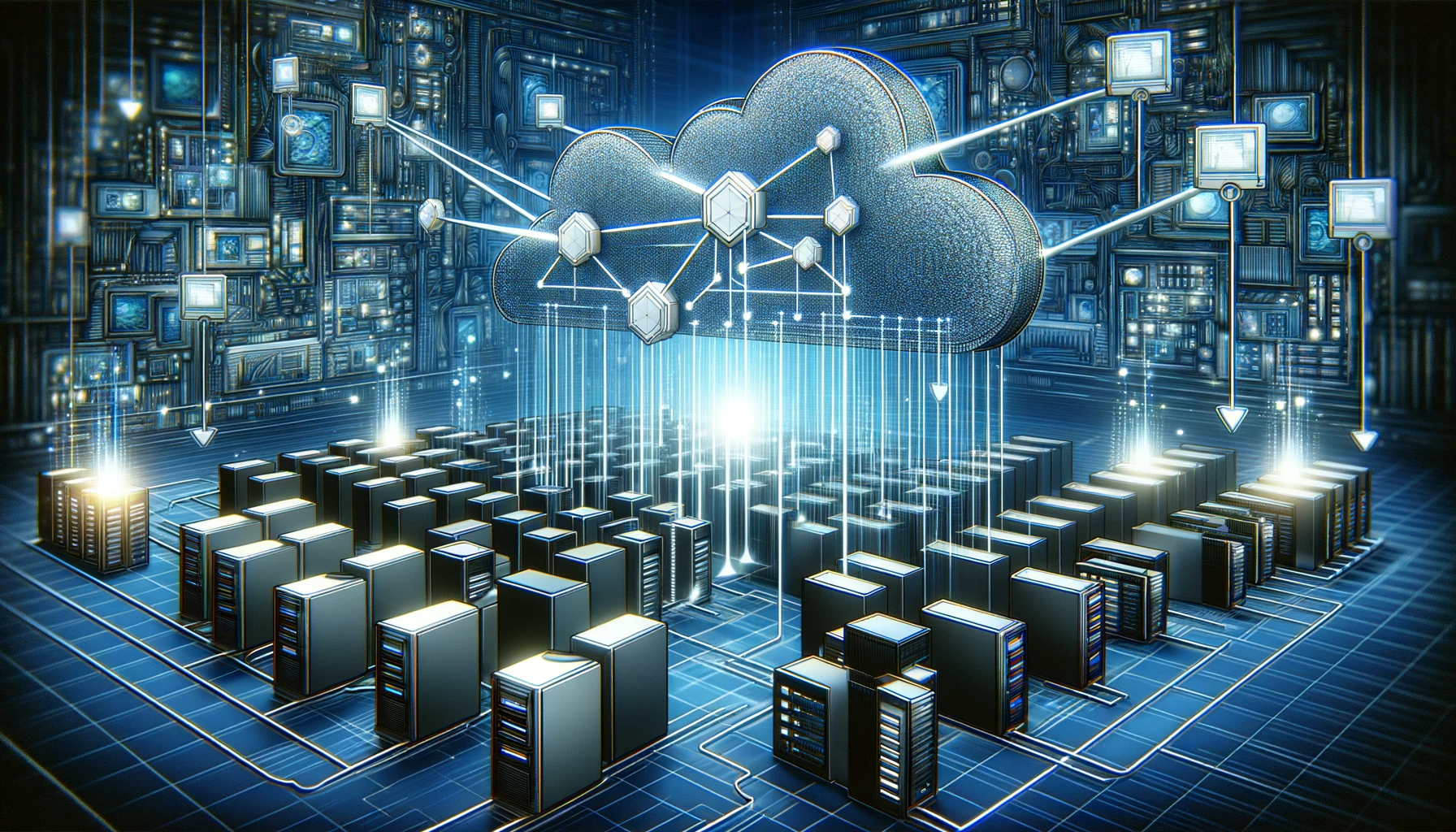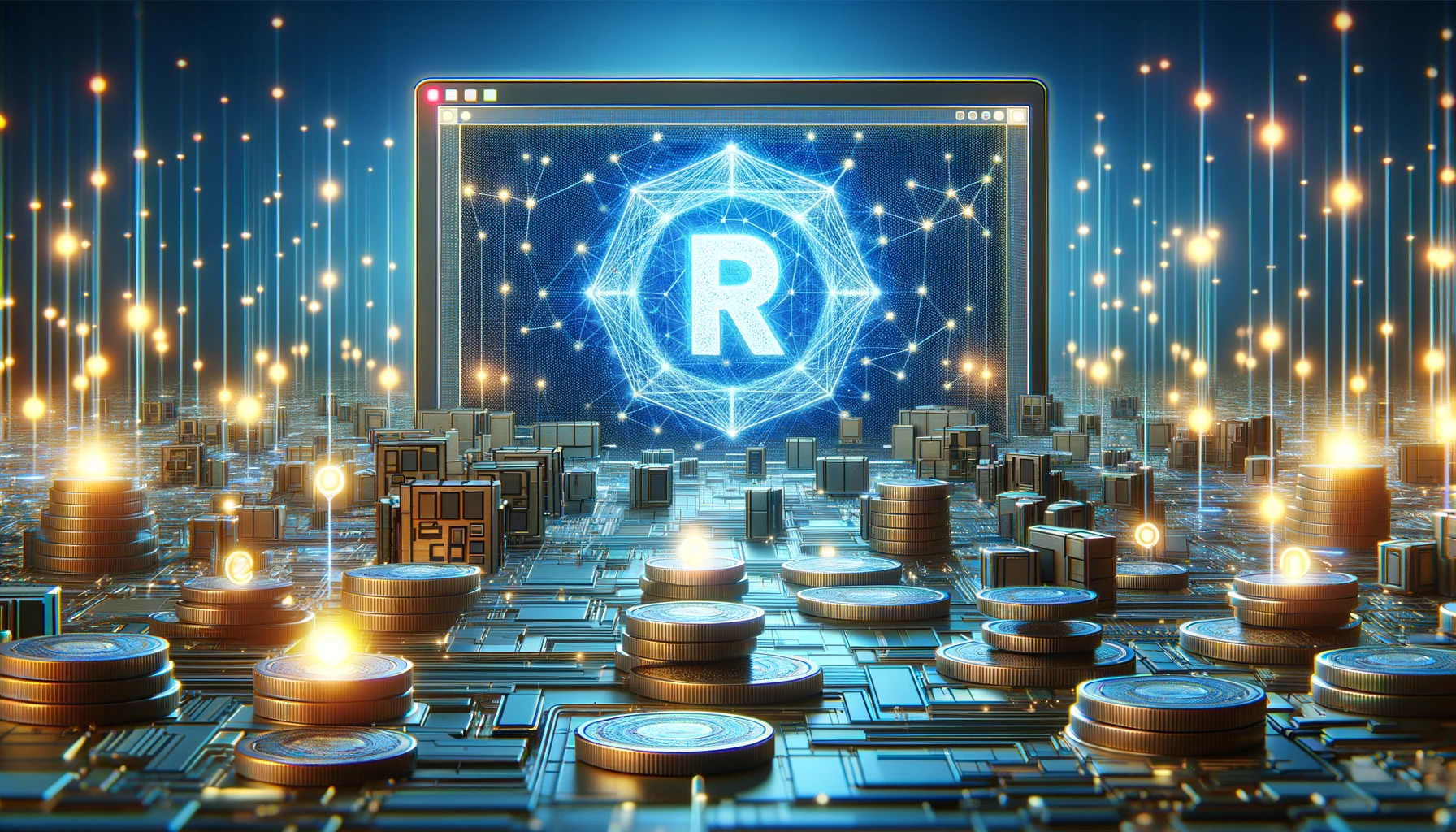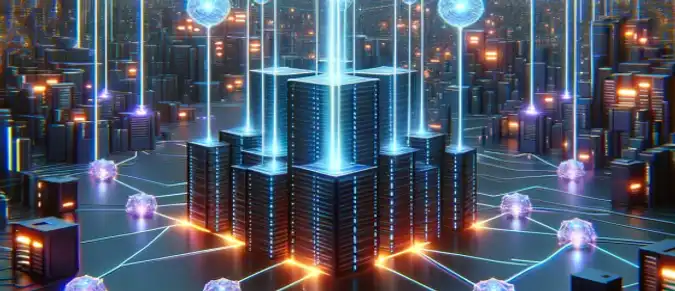Creating professional video content is expensive because it requires intensive resource use for rendering. High-quality model processing consumes a significant amount of time, even with a powerful graphics processor, which is also costly. To reduce expenses, this process can be outsourced.
Considering this, the Render Network project, which offers a solution for such tasks using blockchain technology, can be considered.
- What is Render Network?
- How does Render Network work?
- What are RENDER and RNDR Credit?
- Render Network: Advantages and Disadvantages

What is Render Network?
Render Network is a decentralized protocol that allows renting computational power for graphic processing, using the RENDER token (formerly RNDR) as payment. The foundation of the protocol is the OctaneRender technology, which enhances performance in executing tasks.
Due to high fees on the Ethereum network, on March 26, 2021, an option to transfer the token to Polygon was proposed, maintaining the ability to work with the asset on both platforms.
On December 20, 2023, the protocol was transferred to the Solana blockchain with the aim of reducing transaction costs and increasing operational speed. The RNDR token was replaced with RENDER, exchangeable at a 1:1 ratio through a special bridge.
Ethereum tokens that were exchanged back from Polygon are destroyed during the transfer, while other assets remain in circulation but cannot be used within the protocol. Now, all project operations are conducted through the RENDER token.
How does Render Network work?
Render Network acts as a digital marketplace, connecting content creators with operators to process graphic content. Here's how it works:
- The client uploads a video file and sets the necessary processing parameters.
- The client pays for the services using fiat money or the RENDER token.
- The uploaded file is divided into parts, which are encrypted and hashed.
- The system automatically selects suitable operators to perform the work.
- Operators process these video fragments.
- The client performs quality control of the completed work, confirming its completion.
- Regardless of the payment method, money is exchanged for RENDER tokens through specialized liquidity pools. Of these tokens, 95% are destroyed, and the remaining 5% go to the Render fund to support the ecosystem (Burn and Mint Equilibrium mechanism).
- Within 24 hours, operators receive payment with new assets created in exchange for the destroyed ones.
This process is managed by the Proof-of-Render (PoR) consensus algorithm, similar to Proof-of-Work. In PoR, operators perform rendering instead of mining to earn RENDER tokens.
In Render Network, there is a system of classification for operators into three levels: Trusted Partners, Priority, and Economy. Trusted Partners are the most reliable and fast operators with high service costs, while Priority and Economy offer more affordable prices by using less powerful equipment. Movement between categories is possible depending on the quality of work, which also affects customer reviews.
Moreover, content creators also have a rating that determines their access to quality services from operators.

What are RENDER and RNDR Credit?
RENDER serves as the leading asset in the Render Network protocol, functioning as a means of payment for services and a token for participation in network governance. In addition to its innovative technological capabilities, the RNDR token finds application in a wide range of areas, including the following:
| Field | Application and Impact of the RNDR Token |
|---|---|
| Cinema and Gaming | Improves access to GPU rendering, simplifies the creation of visual effects, animations, and games, reducing costs. |
| Architecture | Allows architects and designers to use rendering power to create realistic and immersive environments. |
| Virtual Reality | Changes the way virtual environments are created, providing access to high-quality graphics and realism. |
Initially, 2,147,483,648 tokens were issued, but after the smart contract was updated in 2018, a 4-to-1 denomination occurred, reducing the total number to 536,870,912 RNDR. Of this amount, 25% was and distributed among venture investors, including major funds like Multicoin Capital and Solana Ventures, which invested $47.24 million in the project.
With the subsequent transition to a new blockchain, the token was rebranded from RNDR to RENDER, and the maximum supply of tokens was increased by 20%, to 644,245,094, in order to motivate the protocol's managers.
Currently, RNDR is still available on centralized exchanges, whereas RENDER can be purchased through Coinbase and on decentralized platforms. Besides, within the Render Network, there is RNDR Credit – a virtual currency for those preferring to pay for services with real money. RNDR Credit can be bought on the official protocol website via payment systems like PayPal or Stripe. This currency is backed by RENDER tokens issued to operators in exchange for the RNDR credits used by clients.
Advantages and Disadvantages of Render Network
Despite the existence of centralized alternatives for video processing, Render Network stands out for protecting user data. Blockchain technology ensures the security and confidentiality of information through encryption and hashing.
Moreover, decentralized rendering could potentially outperform traditional methods in speed due to the ability to scale and attract more operators for work, thus improving video processing performance.
However, there are also drawbacks: a lack of qualified operators or their low-quality work can slow down processing or even make it impossible.
In conclusion, Render Network represents a decentralized protocol capable of effectively solving tasks in the field of graphic processing, possessing unique competitive advantages. The market clearly demonstrates a demand for such innovative solutions. The use of the RENDER token, in turn, allows the platform to generate revenue and contributes to its further development.




